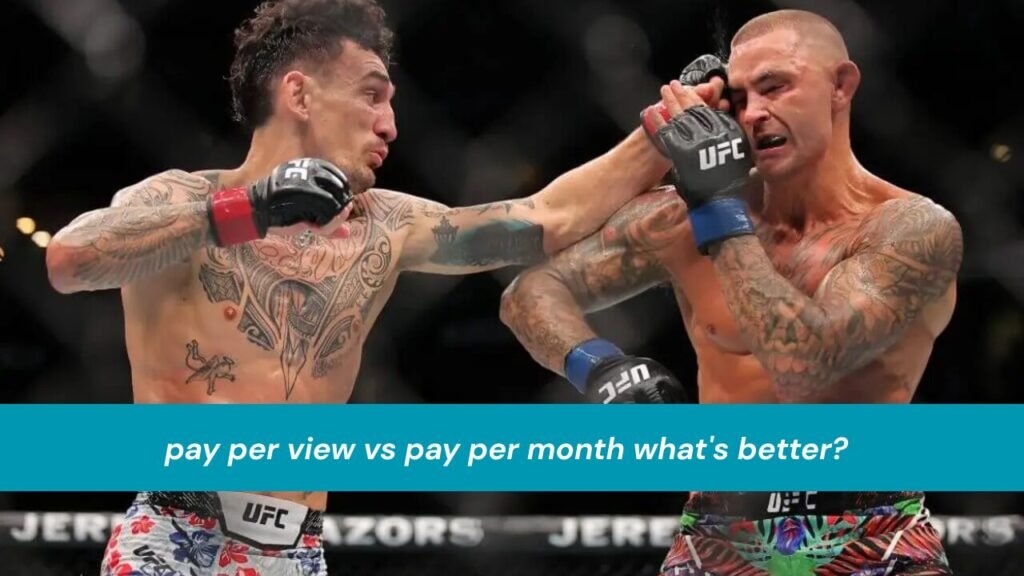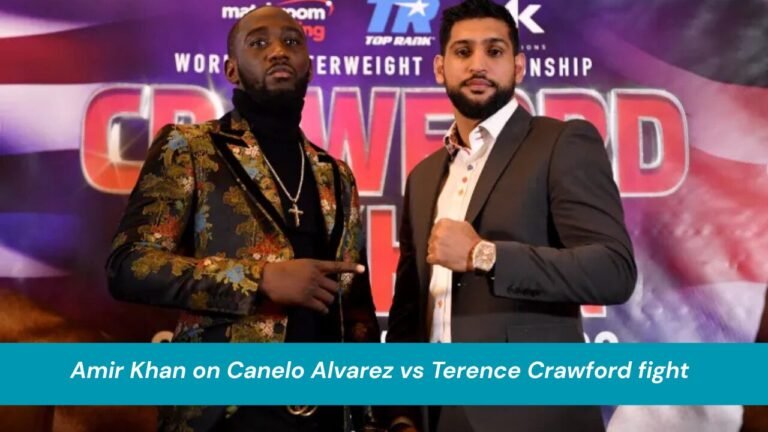In the battle for how audiences consume premium entertainment, the contest between Pay Per View vs Pay Per Month has been as fierce as any title fight in history. For decades, Pay Per View (PPV) was the dominant model for high-profile sports, concerts, and special events. Fans would set aside a night, pay a one-time fee often steep and enjoy an exclusive live broadcast. But over the past decade, the momentum has shifted dramatically. Subscription-based models, where users pay a recurring monthly fee for unlimited or bundled access, have emerged as the clear champion.
This transformation has not been subtle. From the octagon of UFC to the glitzy stages of WWE, from Hollywood premieres to live sports broadcasting, the world’s biggest content providers are reorganizing their business models around subscriptions rather than one-off event purchases. This change is being driven by a blend of evolving consumer expectations, advances in streaming technology, and the relentless push for predictable revenue in an unpredictable marketplace.
The Glory Days of Pay Per View
For much of the late twentieth century and early 2000s, Pay Per View was synonymous with prestige. If an event was on PPV, it meant it was special, rare, and worth the price of admission. Boxing matches like Mike Tyson vs. Evander Holyfield, wrestling spectacles like WrestleMania, and mixed martial arts events from the UFC all thrived on this format.
The model was simple: a broadcaster or promoter would set a fixed price—sometimes as low as $20 in earlier days but climbing to $100 or more for premium matchups—and viewers would pay for the right to watch the event live, often in a narrow time window. For sports fans, it was a ritual. Entire evenings were built around these broadcasts, and friends would gather, pooling money for the cost of a single PPV showing.
There were moments when PPV revenue figures were staggering. The 2015 boxing showdown between Floyd Mayweather and Manny Pacquiao generated more than $400 million in PPV sales, breaking every previous record and solidifying the format’s profitability. Broadcasters could count on a massive surge in income from these tentpole events, with millions of viewers paying top dollar for access.
Yet, even in those high-revenue moments, cracks in the foundation were forming. The exclusivity that made PPV events alluring also made them vulnerable to piracy. As internet speeds increased and streaming technology improved, unauthorized streams of live events proliferated, undermining the revenue potential. Moreover, the high upfront cost excluded casual fans who might have been interested but weren’t willing to pay such a steep fee for a single night of entertainment.
Why the Shift Began
The move away from Pay Per View toward Pay Per Month subscriptions was not sudden; it was the result of gradual, compounding pressures. Consumer behavior began to change with the rise of on-demand content. Platforms like Netflix and Hulu accustomed viewers to the idea that, for a flat monthly fee, they could access vast libraries of movies, TV shows, and even live events at their convenience.
Technology played an equally important role. As streaming quality improved and smart devices became ubiquitous, the need to rely on traditional cable and satellite delivery diminished. This gave content creators and distributors the freedom to control their own distribution pipelines, cutting out middlemen and building direct relationships with audiences.
Economic stability became another driving factor. A Pay Per View event might generate a huge spike in revenue, but those spikes were unpredictable and unsustainable over time. For companies looking to invest in long-term content strategies, recurring monthly revenue was far more appealing. By securing a steady stream of income through subscriptions, businesses could plan budgets more accurately, reinvest in production, and reduce the financial risk associated with big one-off events.
Why Pay Per Month Became the Heavyweight Champion
When comparing Pay Per View vs Pay Per Month, the advantages of the subscription model are hard to ignore. From the perspective of a media company, subscriptions create predictable, recurring revenue streams. This stability allows for more accurate forecasting and strategic investment in content production, marketing, and technology infrastructure. Instead of gambling on whether a single PPV event will sell enough to cover costs, companies know they have a guaranteed base income each month from their subscriber base.
From the consumer’s perspective, the appeal is equally strong. Paying $10 to $20 per month for unlimited or broad access feels far less daunting than dropping $60 or more on one event. The psychological barrier to entry is lower, encouraging more people to sign up and stay signed up. Once inside a subscription platform, users are more likely to explore additional offerings, from past event archives to original programming, which deepens their engagement and strengthens brand loyalty.
Subscriptions also open the door for cross-promotion. A service that offers both live sports and a library of films or series can entice users to consume content outside their initial interest area. Someone who signs up for a big UFC fight might stay for the documentaries, reality shows, or other sports coverage included in the subscription. This creates more touchpoints for engagement and reduces churn rates, which are a constant challenge in subscription-based businesses.
Data collection is another decisive advantage. With PPV, the only data point is whether a viewer purchased the event or not. Subscription services, however, can track detailed user behavior, from viewing habits to device preferences, enabling them to personalize recommendations and tailor marketing strategies. This data-driven approach enhances user satisfaction and improves retention rates over time.
Real-World Examples UFC, WWE, Paramount, and ESPN
Consider the UFC, one of the last great strongholds of the PPV model. For years, major fight cards were sold exclusively as Pay Per View events through cable providers. But in recent years, UFC’s partnership with ESPN+ has transformed the delivery model. Fans now must have an ESPN+ subscription to access PPV fights, blending the two systems. While certain marquee bouts still require an extra fee, the baseline subscription ensures a steady stream of income and keeps fans engaged year-round with other fight nights, behind-the-scenes content, and original shows.
WWE made an even more decisive shift in 2014 when it launched the WWE Network, moving away from PPV entirely. Initially, this transition met resistance from traditional PPV distributors and some fans, but the long-term payoff was substantial. By offering all major events including WrestleMania under the monthly subscription, WWE created a global digital platform that increased fan engagement beyond the big shows. Eventually, the WWE Network merged into Peacock, NBCUniversal’s streaming service, expanding its reach even further.
Paramount Global and other streaming giants have also embraced the subscription-first approach. Bundling live sports, films, and TV shows into one monthly package makes the offering more appealing than a one-off PPV purchase. This strategy also positions these companies to compete in the increasingly crowded streaming marketplace, where the battle is as much about keeping customers as acquiring them.
As The Athletic reported, even legacy broadcasters now see the advantages of this model. Subscription-based platforms secure recurring engagement, ensuring that audiences don’t just tune in once a year for a big event but remain part of the ecosystem throughout the year.
The Numbers Behind the Knockout
The financial data backs up the perception that subscriptions are winning. A 2024 Deloitte report revealed that nearly 78 percent of U.S. households now subscribe to at least one streaming or subscription sports service. The average household spends $61 per month on subscription services, compared to only $15 on Pay Per View purchases in the same period.
While a single PPV event can generate massive short-term profits, the frequency and consistency of subscription spending outstrip PPV’s sporadic windfalls. Furthermore, the churn rate of customers canceling after one purchase is far higher with PPV because there is no ongoing relationship to maintain.
The Consumer Trade-Off
From the consumer’s perspective, the Pay Per View vs Pay Per Month debate comes down to choice and value. Pay Per View offers the flexibility of paying only for the events you truly care about, without any ongoing commitment. This can be appealing to casual viewers who may only watch one or two major events a year. However, the per-event cost is significantly higher, and the risk of missing out if you forget or can’t purchase in time is real.
Subscriptions, by contrast, spread the cost across multiple events and types of content. While the monthly fees can add up especially if you subscribe to multiple platforms the value proposition is stronger for frequent viewers. The convenience of having everything available on-demand, coupled with the ability to cancel or restart at will, makes the subscription model attractive to a broad audience.
Adapting as a Creator
For content creators, the takeaway from this shift is clear: building for retention is more sustainable than chasing big spikes. This means developing exclusive content drops between major releases to keep audiences engaged, offering membership tiers with added perks, and using data insights to personalize the viewer experience. Strategic partnerships and bundle deals can also help widen reach and keep subscription fatigue at bay.
Expert Insights
Media strategist Laura Kent, who has built subscription platforms for major entertainment brands and is rated 4.9 stars from over 180 Google reviews, summarizes the shift succinctly: “The subscription model aligns incentives. Creators are no longer pressured to sell the hype of one night—they’re focused on delivering value over time. That’s why even combat sports, once the PPV goldmine, are embracing subscriptions.”
FAQ
Is Pay Per View disappearing entirely?
No. PPV still has a place for mega-events that command massive global interest, such as high-profile boxing matches. But its dominance is waning as consumers shift toward all-inclusive subscriptions.
Which model is more profitable for companies?
Subscriptions tend to generate steadier revenue, while PPV can still produce huge one-time earnings for exceptional events. Many companies now use hybrid models to balance both.
Will subscription prices continue to rise?
It’s likely, as production costs increase and companies add more exclusive content. Bundling services may help mitigate price hikes for consumers.
Can a hybrid model succeed?
Yes. The UFC’s ESPN+ approach demonstrates how blending subscription access with occasional PPV fees can maximize both revenue streams.
Conclusion
In the match of Pay Per View vs Pay Per Month, the subscription model has emerged as the more sustainable, consumer-friendly, and data-rich approach. While PPV will remain for rare, highly-anticipated spectacles, the industry’s center of gravity has shifted toward recurring monthly access. For audiences, this means more choice and lower per-event costs. For companies, it means predictable income and deeper audience relationships. And for the entertainment industry as a whole, it marks the beginning of a new era one where the big fight isn’t just on Saturday night, but every day, across every screen.




